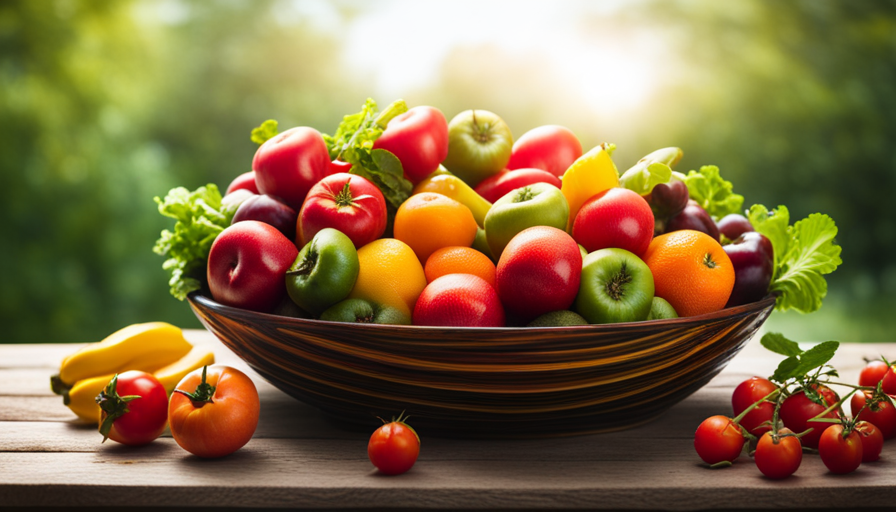Are you a fan of indulging in the briny, succulent delight of raw oysters? While relishing these ocean delicacies can be quite a treat, it’s important to note that eating raw oysters carries a risk of foodborne illnesses. Nevertheless, fret not, as we have put together a comprehensive guide to help you reduce the chances of falling ill from consuming raw oysters.
From selecting the freshest oysters to proper storage and handling techniques, we’ll walk you through every step to ensure your oyster indulgence remains a delectable and safe affair.
Discover the importance of thorough cleaning and the option of cooking oysters to eliminate any lurking bacteria.
We’ll even delve into the realm of allergies and sensitivities, as being mindful of these factors is crucial for a risk-free experience.
So, whether you’re planning to indulge in a plate of raw oysters at home or dine out at your favorite seafood joint, this guide will equip you with the knowledge and know-how to keep your oyster cravings satisfied, while minimizing the risk of foodborne illnesses.
Key Takeaways
- Thoroughly clean and cook oysters to eliminate bacteria and reduce the risk of foodborne illnesses.
- Prevent cross-contamination by keeping raw oysters separate from other foods during preparation and cleaning surfaces that come into contact with raw oysters.
- Store raw oysters properly in leak-proof containers on the bottom shelf of the refrigerator.
- Stay informed about shellfish safety advisories, avoid oysters from areas affected by harmful algal blooms, and report any symptoms of foodborne illnesses promptly to aid in identifying the source of contamination.
Understanding the Risks of Foodborne Illnesses
Did you know that understanding the risks of foodborne illnesses is crucial in reducing the chances of getting sick from raw oysters?
When it comes to consuming raw oysters, it’s important to be aware of the potential dangers associated with them. One of the main concerns is the presence of common foodborne pathogens such as Vibrio vulnificus and norovirus. These pathogens can cause severe illnesses including vomiting, diarrhea, abdominal pain, and in some cases, even death.
To prevent contamination in oyster harvesting, several measures can be taken. First and foremost, it’s essential to ensure that oysters are harvested from clean and safe waters. Regular testing of the harvesting waters for bacterial contamination is necessary to minimize the risk of pathogens. Oyster farmers should also follow proper sanitation practices during the harvest, handling, and transportation processes. This includes maintaining clean and sanitized equipment, ensuring proper refrigeration, and preventing cross-contamination.
Additionally, consumers can play a role in reducing the risk of foodborne illnesses from raw oysters. It’s important to purchase oysters from reputable sources that comply with safety regulations. Proper storage and handling of raw oysters are also crucial. They should be stored at temperatures below 40°F (4°C) and consumed as soon as possible after purchase.
By understanding the common foodborne pathogens associated with raw oysters and taking necessary precautions in oyster harvesting, contamination can be prevented, reducing the risk of foodborne illnesses. Remember, knowledge and attention to detail are key in ensuring the safety of consuming raw oysters.
Choosing Fresh and High-Quality Oysters
When selecting oysters, it’s crucial to pick ones that are fresh and of the highest quality. This ensures that you’re reducing the risk of foodborne illnesses associated with raw oysters. Here are some tips to help you choose fresh and high-quality oysters:
-
Look for oysters with tightly closed shells. This indicates that they’re alive and haven’t been exposed to air for too long.
-
Check the smell of the oysters. They should have a clean and briny scent, similar to the ocean. Avoid oysters that have a strong fishy or foul odor.
-
Consider the source of the oysters. Look for oysters that come from reputable oyster farms or sustainable seafood sources. Oyster farming practices play a crucial role in maintaining the quality and safety of the oysters.
-
Pay attention to the appearance of the oyster meat. It should be plump, shiny, and translucent. Avoid oysters that have discolored or slimy meat.
By following these guidelines, you can ensure that you’re choosing fresh and high-quality oysters, reducing the risk of foodborne illnesses. Remember to always handle and store oysters properly to maintain their freshness and safety.
Proper Storage and Handling of Oysters
To ensure that your oysters stay fresh and maintain their quality, it’s important to handle and store them with care. Proper handling techniques and following oyster storage guidelines are crucial in reducing the risk of food illness. Here are some key points to remember:
-
Temperature: Oysters should be stored at a temperature between 32°F and 45°F (0°C and 7°C). This helps to slow down bacterial growth and maintain their freshness.
-
Moisture: Oysters need to be kept in a moist environment to prevent them from drying out. Place them in a container with a damp cloth or paper towel to maintain their natural moisture.
-
Time: It is best to consume oysters as soon as possible after purchasing them. They are highly perishable, and the longer they sit, the higher the risk of spoilage.
Properly storing and handling oysters is essential to ensure their safety and taste. By following these guidelines, you can reduce the risk of foodborne illnesses and enjoy the deliciousness of raw oysters without any worries. Remember, freshness is key, so handle and store your oysters with care.
Thoroughly Cleaning Oysters Before Consumption
Thoroughly cleaning oysters before eating is crucial to ensure their safety and maintain their delicious flavor. When it comes to oyster shucking techniques, it’s important to follow best practices for oyster preparation.
Start by rinsing the oysters under cold running water to remove any dirt or debris on the shell. Use a stiff brush to scrub off any stubborn particles, making sure to pay attention to the hinge area. This is where bacteria can often accumulate.
Next, it’s time to shuck the oysters. Hold the oyster firmly in one hand, with the flat side facing up and the hinge pointing towards you. Insert an oyster knife into the hinge, applying gentle pressure to pry it open. Be careful not to force it, as this can cause the shell to break and potentially lead to injury. Once the oyster is open, carefully slide the knife along the top shell to detach the oyster from the bottom shell.
After shucking the oysters, it’s important to remove any remaining debris or shell fragments. Inspect each oyster carefully, discarding any that appear damaged or have an unpleasant odor. Rinse the shucked oysters under cold running water once again to ensure they are clean and ready to be enjoyed.
By following these oyster shucking techniques and best practices for oyster preparation, you can reduce the risk of food illness and savor the incredible taste of fresh oysters.
Cooking Oysters to Eliminate Bacteria
Cooking oysters is like unleashing a culinary magic spell that banishes any unwanted bacteria, ensuring a safe and delicious dining experience. When it comes to reducing the risk of bacterial contamination in raw oysters, cooking them thoroughly is a crucial step. There are several cooking techniques that can be employed to eliminate harmful bacteria and make your oysters safe to consume.
The most common cooking method for oysters is steaming. This involves placing the oysters in a pot with a small amount of liquid, such as water or wine, and covering them with a lid. Steam is then generated, cooking the oysters until their shells open, indicating that they’re ready to eat.
Another popular method is grilling. By placing the oysters on a hot grill, the high heat kills any bacteria present, while imparting a smoky flavor to the oysters.
Regardless of the cooking technique used, it’s important to ensure that the oysters are cooked thoroughly. The internal temperature of the oysters should reach at least 145°F (63°C) to ensure any harmful bacteria are destroyed. Additionally, it’s essential to discard any oysters that don’t open during the cooking process, as they may be unsafe to eat.
By cooking oysters properly, you can eliminate the risk of bacterial contamination and enjoy them without worry. So, the next time you indulge in these delectable treats, remember to cook them thoroughly to ensure a safe and enjoyable dining experience.
Avoiding Cross-Contamination in the Kitchen
Make sure you keep your kitchen clean and separate raw oysters from other ingredients to prevent any potential contamination. Here are some tips to help you avoid cross-contamination and maintain food safety:
-
Designate separate cutting boards and utensils for raw oysters. This will prevent any bacteria from spreading to other foods during preparation.
-
Wash your hands thoroughly before and after handling raw oysters. Use warm water and soap for at least 20 seconds to ensure proper sanitation.
-
Store raw oysters in a leak-proof container on the bottom shelf of the refrigerator. This will prevent any juices from dripping onto other foods and causing contamination.
-
Clean and sanitize all surfaces that come into contact with raw oysters. Use a mixture of one tablespoon of bleach per gallon of water to effectively kill any bacteria.
By following these steps, you can greatly reduce the risk of food illness in raw oysters. Remember, prevention is key when it comes to maintaining food safety. Keep your kitchen clean and take the necessary precautions to avoid cross-contamination.
Being Mindful of Allergies and Sensitivities
Being mindful of allergies and sensitivities is essential to creating a safe and enjoyable dining experience for everyone. When it comes to raw oysters, allergy management is crucial to prevent any adverse reactions.
Oysters are known to contain proteins that can trigger allergies in some individuals, especially those who are allergic to shellfish. To reduce the risk of food illness, it is important to be aware of any allergies or sensitivities that you or your guests may have.
One way to manage allergies is to inform your server or chef about any specific food allergies or sensitivities before ordering raw oysters. They can guide you through the menu and suggest alternative options that are safe for you to consume. Ingredient substitutions can also be made to accommodate allergies. For example, if you have a dairy allergy, you can request a dairy-free sauce or dressing to accompany your oysters. By being proactive and communicating your needs, you can ensure that your dining experience is both enjoyable and safe.
It is also important to remember that cross-contamination can occur in the kitchen, potentially causing allergens to come into contact with your oysters. To minimize this risk, make sure to ask about the kitchen’s practices for preventing cross-contamination and if they have separate utensils and preparation areas for allergen-free dishes.
Being mindful of allergies and sensitivities not only protects your health but also shows consideration for others who may have dietary restrictions.
Monitoring Shellfish Safety Advisories
To further reduce the risk of food illness in raw oysters, it’s important to stay informed about the safety of shellfish through monitoring shellfish safety advisories. By doing so, you can ensure that you’re consuming oysters that have been harvested and handled in a safe manner.
Shellfish safety advisories are issued by regulatory agencies to inform the public of any potential health risks associated with consuming shellfish, including oysters. These advisories provide valuable information on the current status of shellfish harvesting areas and any closures or restrictions that may be in place.
Here are a few reasons why monitoring shellfish safety advisories is crucial:
-
Ensuring compliance with shellfish harvesting regulations: By staying up-to-date with advisories, you can ensure that the oysters you consume are sourced from areas that meet the necessary safety standards. This helps minimize the risk of contamination and foodborne illnesses.
-
Protecting yourself from harmful toxins: Shellfish safety advisories also provide information about the presence of harmful toxins, such as those caused by harmful algal blooms. By avoiding oysters from affected areas, you can protect yourself from potential health hazards.
-
Importance of traceability: Monitoring advisories helps promote traceability in the shellfish industry. By knowing where your oysters come from and their safety status, you can make informed choices and support responsible shellfish harvesting practices.
By staying informed through shellfish safety advisories, you can take proactive steps in reducing the risk of food illness while enjoying the deliciousness of raw oysters.
Following Safe Consumption Practices at Restaurants
Savor the delectable flavors of oysters by embracing safe consumption practices at your favorite restaurants, ensuring a delightful dining experience. When it comes to raw oysters, it’s essential to follow safe handling techniques to minimize the risk of food illness.
Proper refrigeration plays a crucial role in maintaining the quality and safety of oysters. Restaurants should always purchase oysters from reputable suppliers who adhere to strict quality control measures. Upon delivery, the oysters must be stored at temperatures below 41°F (5°C) to prevent bacterial growth. It is important to check the temperature of the oyster storage area regularly to ensure it remains within the safe range.
When ordering raw oysters, make sure they are served on a bed of ice or in a chilled platter. This helps to keep them at the correct temperature and reduces the risk of foodborne illness. Additionally, the oysters should be properly shucked by trained staff who follow strict hygiene practices.
As a consumer, you can also play a role in ensuring safe consumption. Before indulging in raw oysters, inspect them carefully. They should have a fresh, mild smell of the ocean and be tightly closed. Any open or damaged oysters should be discarded.
By following safe handling techniques and emphasizing the importance of proper refrigeration, both restaurants and consumers can enjoy raw oysters while minimizing the risk of food illness. So go ahead, savor the delicate flavors and enjoy a worry-free dining experience.
Recognizing and Responding to Symptoms of Foodborne Illnesses
Take a moment to familiarize yourself with the signs and symptoms of potential foodborne illnesses so you can promptly respond and ensure your dining experience remains enjoyable. Recognizing symptoms is crucial in preventing the spread of food-related illnesses.
Common symptoms include nausea, vomiting, diarrhea, abdominal pain, and fever. These symptoms can appear anywhere from a few hours to several days after consuming contaminated food, so it’s important to pay attention to how you feel in the days following your meal.
If you experience any of these symptoms, it’s essential to seek medical attention as soon as possible. Foodborne illnesses can range from mild to severe, and prompt medical care can help alleviate symptoms and prevent complications. Additionally, reporting your illness to the appropriate authorities can aid in identifying the source of contamination and preventing further cases.
When seeking medical attention, be sure to provide your healthcare provider with detailed information about what you ate, where you dined, and when you started experiencing symptoms. This information can assist in diagnosing the specific type of foodborne illness and guide appropriate treatment.
Remember, recognizing symptoms and seeking medical attention are vital steps in protecting yourself and others from the risks of foodborne illnesses. Stay vigilant, take care of your health, and enjoy your dining experiences with peace of mind.
Frequently Asked Questions
Can I eat raw oysters if I am pregnant?
Yes, you should avoid eating raw oysters if you’re pregnant. There are risks associated with consuming raw oysters while pregnant. Raw oysters may contain harmful bacteria like Vibrio vulnificus, which can cause serious foodborne illnesses. These illnesses can be especially dangerous during pregnancy, as they may lead to complications like premature birth or miscarriage. It’s important to prioritize your health and the health of your baby by choosing safe alternatives to raw oysters during pregnancy.
How long can oysters be stored in the refrigerator before they become unsafe to eat?
Oysters can be stored in the refrigerator for up to a week before they become unsafe to eat. To ensure their freshness, follow these oyster storage guidelines.
Place them in a shallow container, cover with a damp cloth, and store on the bottom shelf of the fridge. Check for signs of spoilage before consuming, such as a strong fishy odor, slimy texture, or discoloration. Proper storage and regular inspection will help you enjoy oysters safely.
Is it safe to eat oysters from any body of water?
When it comes to eating oysters from different countries, it’s like diving into a vast ocean of flavors. But before you take the plunge, consider oyster farming and water quality.
Not all bodies of water are created equal, and some may pose a higher risk of food illness. It’s important to research and ensure that the oysters you’re consuming come from clean and regulated sources to reduce the chances of getting sick.
Can I eat oysters if I have a compromised immune system?
If you have a compromised immune system, it’s not recommended to eat oysters. Oyster consumption can pose a higher risk for individuals with weakened immune systems. Your immune system plays a crucial role in fighting off potential pathogens that may be present in raw oysters. Therefore, it’s essential to prioritize your immune system health and consult with a healthcare professional before consuming oysters or any other risky foods.
What should I do if I accidentally consume a raw oyster that may have been contaminated?
If you accidentally consume a raw oyster that may have been contaminated, it’s important to take immediate action. First, don’t panic.
Monitor yourself for any symptoms of food illness, such as nausea or diarrhea.
Contact a healthcare professional to discuss your concerns and seek appropriate medical advice.
It’s crucial to stay hydrated and maintain good hygiene practices.
Remember, swift action and expert guidance are key in handling situations like accidental consumption of a contaminated oyster.
Can Proper Preparation Reduce the Risk of Food Poisoning from Raw Oysters?
When it comes to preparing raw oysters safely, proper preparation can significantly reduce the risk of food poisoning. This includes purchasing oysters from reputable sources, storing them at the correct temperature, and following strict guidelines for shucking and consuming them to ensure that they are safe to eat.
Can Proper Preparation of Raw Oysters Reduce the Risk of Food Poisoning?
When it comes to enjoying raw oysters, preparing raw oysters safely is crucial in reducing the risk of food poisoning. Proper handling, cleaning, and refrigeration can all contribute to a safer dining experience. It’s important to follow food safety guidelines to ensure that raw oysters are enjoyed without any negative consequences.
Conclusion
In conclusion, by following the tips and guidelines outlined in this article, you can greatly reduce the risk of foodborne illnesses associated with raw oysters.
Remember, your health and well-being should always be a top priority when it comes to consuming seafood. Just like a skilled sailor navigating through treacherous waters, you have the power to steer clear of potential dangers.
So, grab your compass of knowledge, set sail on the sea of safe food practices, and enjoy the deliciousness of raw oysters with peace of mind. Bon appétit!

















